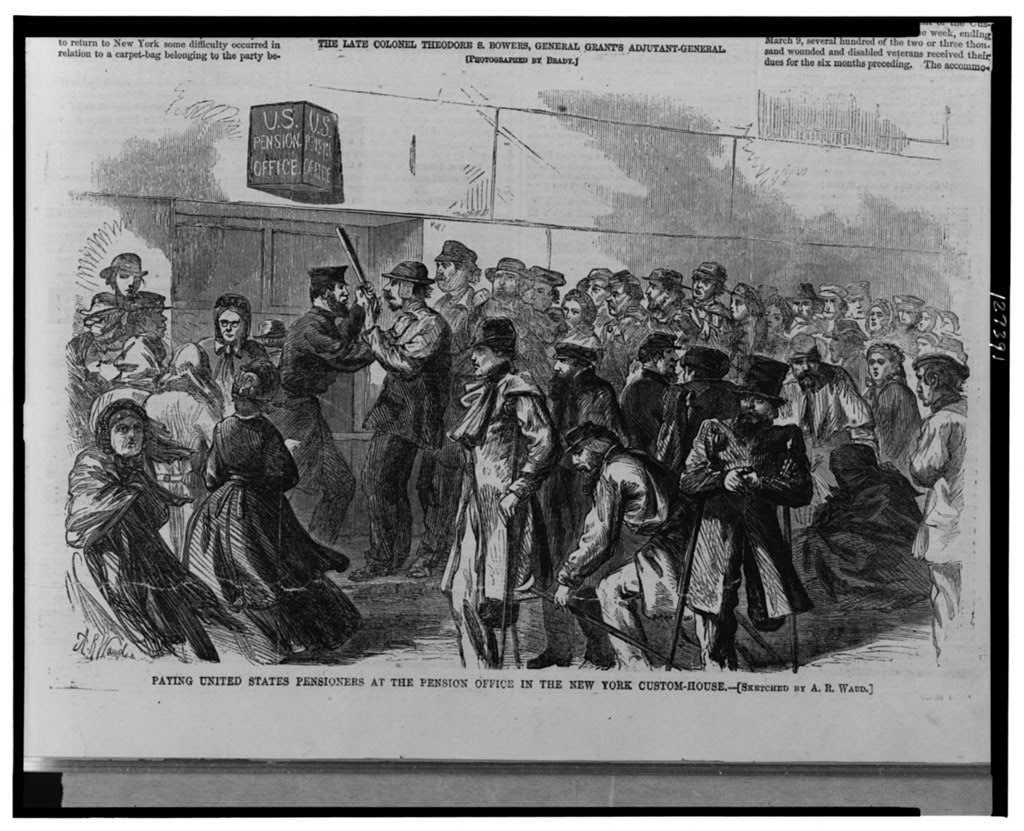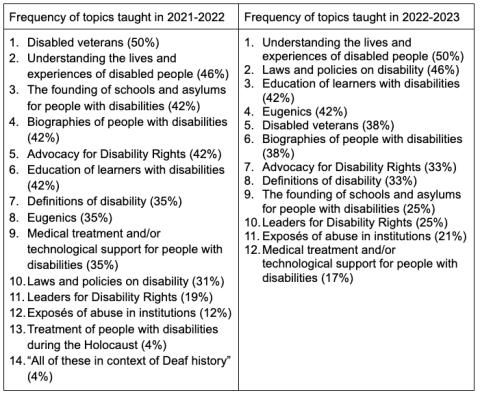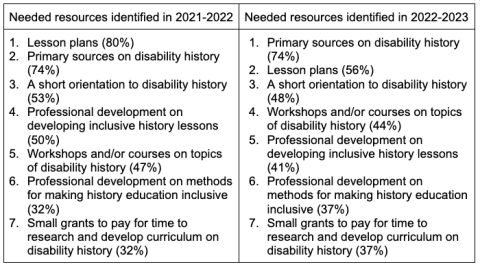Emerging America 2023 Survey on the Teaching of Disability History
By Rich Cairn, Emerging America
At the end of the 2021-2022 and 2022-2023 school years, Emerging America widely promoted an online survey of teachers to discover how much they teach disability history. Though the response has been small, the results offer intriguing insights.
The 27 2022-2023 respondents represented 7 states, 59% from Emerging America’s home state of Massachusetts. Distribution by grade was: Pre-K (4%); K-5 (15%); 6-8 (11%); 9-12 (56%). About 15% play a role beyond the classroom as district coordinators or curriculum specialists. By discipline, they represented: social studies (41%); Special Education (30%); Librarians (7%); and English Language Arts (4%).
The most important finding is that, even among this self-selected group–most were enrolled in disability history courses–50% in the first year and 30% in the second year reported that they never directly taught disability history. An additional 36% in the first year and 44% in the second year said that they had taught the topic only 1-3 times that year.
Meanwhile, the proportion who reported teaching disability history seven or more times per year declined from 22% to 4%. Though in reality, the sample size is too small to draw conclusions about such shifts.
A follow-up question about less concentrated efforts found very similar results. When we asked how often per year teachers “mention in passing (one or two minutes) an aspect of disability history”–”not counting the question above”, most answered either “none” (26%) or just 1-3 times per year (44%). 26% answered 4-9 times per year. Just one person said that they at least mention disability history ten or more times per year.
The frequency of disability history topics showed a breadth of historical topics, with "Understanding the lives and experiences of disabled people" at the top. There was minimal variation from the prior year. (See Figure 1. Link to a text version of this article.) More data is needed to determine the import of any trends.
Of those who answered a question about where they get “other resources (including primary sources, videos, or articles–that are not lesson plans),” they reported: the Library of Congress (56%), Emerging America (29%), the Disability History Museum (29%), the internet generally (15%), and the Longmore Institute (10%). One person each reported getting disability history resources from: Scholastic, UpFront Magazine, the BBC, EPIC, Reading A-Z, Deaf Heritage (Felicia M. Alexander and Jack R. Gannon), None So Deaf (Sarah Val), Gallaudet University, and local organizations.
Of those who do teach disability history, 68% said they write their own lessons; 26% use lessons from Emerging America; 11% get lessons from the Disability History Museum; and 11% said that they use picture books.
One person each volunteered that they get disability history lessons from their predecessor or from Teachers Pay Teachers.
Teachers identified the resources that would best help them to expand or improve their teaching of disability history. A decline in the reported need for lesson plans may be influenced in part by the release of Reform to Equal Rights: K-12 Disability History Curriculum in March 2023, which most respondents knew about. The proportion who seek primary sources remained high, which makes sense given the number who write their own lessons. One librarian volunteered that they constantly seek inclusive books by authors and /or illustrators who are marginalized. (See Figure 2. Link to a text version of this article.)
Perhaps most valuable of all, open-ended comments reveal deep insights about the challenges of teaching of disability history:
- It's been a great addition to my curriculum, and presenting it means so much to my students who deal with all types of disabilities, but it is hard to not fall into the trap of teaching it from a deficit point of view.
- While it is part of MA history curriculum, I don't know anyone in my history department that actually teaches it beyond touching upon it (perhaps with Civil War medicine; FDR; the muckraking of Nellie Bly; or the Holocaust); I certainly don't know anyone who devotes an entire lesson to it. I would absolutely *love* to take an entire college course on the History of Disability.
- As an intervention specialist, my time is so split between IEP goals and academic content that I rarely have time or energy to address disability history.
- Yes, please purchase materials that are created by people with disabilities. We need to show publishers that they are sought out. In my opinion, I don't think teaching invisible disability history is as easy as visible disability history. People easily make connections with the word "disability" to obvious disabilities like CP, Down Syndrome, wheelchair users, etc. as opposed to invisible ones like deafness. I am deaf myself.
- Honestly I think it is access to the knowledge of it. I know that taking the disability history workshop with you added so much to my knowledge base, but there is so much to know that it is hard to have the time to keep expanding what I have learned so far. Additionally for people in my department, moving past the "heroes and holidays" level for any part of this country's history is the challenge for all of social studies these days, and disability history is not an exception to this common practice. Moving people to embrace a deeper integration of the subject is difficult to do from a management perspective.
We note in closing that a small but growing number of states, including California, Illinois, Massachusetts, New Jersey, and Pennsylvania now require varying degrees of disability history content. We eagerly anticipate the results of colleagues’ survey of New Jersey teachers. Please contact me to share news about your state: rcairn@collaborative.org. Watch this space and sign up for the Emerging America History eNews for updates. (See below.)
Link to the 2022 survey summary. We repeated the Emerging America survey in April, 2024 and reported survey results in December, 2024.
Illustration: Paying United States pensioners at the Pension Office in the New York Custom-House. Sketch by A.R. Waud. (1866). https://www.loc.gov/item/00652763/. Library of Congress.
What attitude about pensioners does this political cartoon convey?






